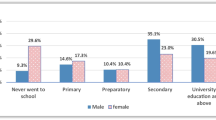Abstract
Kolkata, the former capital of British India, provides a classic example of Third World urbanisation. Here, urbanisation led by rural to urban migration took place before industrialisation. The factories which started growing on the banks of the River Hoogly were not enough to provide employment to the city’s huge population, a large part of which was formed by the rural landless. Independence and subsequent partition saw an unprecedented rush of refugees—a phenomenon not encountered in the other megacities of India. The development of slums and squatter settlements is associated with urbanisation. A large part of rural migrants failed to get suitable jobs and shelter in the city and therefore started living in slums. According to the 2011 Census of India, about 37,760 homeless persons live in Kolkata. The Beliaghata Canal drains areas of Chitpur, Cossipur, Baghbazar, Ultadanga, Maniktala, Salt Lake and Beliaghata. With the urbanisation of Salt Lake City and the construction of the Eastern Metropolitan Bypass, the canal ceased to be navigable. Lack of proper maintenance led to the pollution and stagnation of the canal. Eventually, the area became the home of Kolkata’s poorest strata. This paper aims to focus on the living conditions and the levels of deprivation among these citizens. A survey carried out in 50 households within the study area deals with issues such as identity, security, provision of minimum needs, education, health facilities and so on. The data is then standardised, and a composite index focussing on the economic and social parameters has been prepared separately so as to calculate the life quality index for each family. A comparative study has been made by calculating the life quality index of 20 families in a nearby registered slum. The results are then analysed and interpreted.
Access this chapter
Tax calculation will be finalised at checkout
Purchases are for personal use only
Similar content being viewed by others
References
Baker J, Schuler N (2004) Analysing urban poverty—a summary of methods and approaches. The World Bank. https://doi.org/10.1596/1813-9450-3399
Bhinge R, Kapoor H (2013) Well-being in India: disparity and surprises across districts. Tata Strategic Management Group, pp 101–116
Census of India (2011) Rural urban distribution of population—provisional population totals, pp 8–15
Dutta P (2006) Urbanization in India. In: European Population Conference, pp 6–15
Government of India, Planning Commission (2014) Report of the expert group to review the methodology of measurement of poverty, pp 3–20
Schenk WC (2010) Slum diversity in Kolkata. Columbia Undergraduate J South Asian Stud 1(2):91–110
World Bank (2003) World development report 2004: making services work for poor people. https://openknowledge.worldbank.org/handle/10986/5986
Author information
Authors and Affiliations
Corresponding author
Editor information
Editors and Affiliations
Rights and permissions
Copyright information
© 2020 Springer Nature Switzerland AG
About this chapter
Cite this chapter
Ghosh, A. (2020). Status of the Urban Poor in Kolkata—A Case Study Regarding Squatter Settlements Along the Beliaghata Canal. In: Bandyopadhyay, S., Pathak, C., Dentinho, T. (eds) Urbanization and Regional Sustainability in South Asia. Contemporary South Asian Studies. Springer, Cham. https://doi.org/10.1007/978-3-030-23796-7_13
Download citation
DOI: https://doi.org/10.1007/978-3-030-23796-7_13
Published:
Publisher Name: Springer, Cham
Print ISBN: 978-3-030-23795-0
Online ISBN: 978-3-030-23796-7
eBook Packages: Political Science and International StudiesPolitical Science and International Studies (R0)




